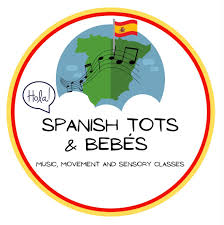The Art of Learning: Japanese Class
Learning Japanese is a journey into the intricate beauty of a language that reflects the rich culture and history of Japan. The allure of mastering this language goes beyond mere communication; it opens doors to a world of tradition, art, and innovation.
Immersing in Language and Culture
Joining a Japanese class is not just about conjugating verbs or memorising vocabulary. It’s about immersing yourself in the nuances of a language that encapsulates centuries of tradition and modernity. From mastering the elegant calligraphy to understanding the subtle politeness levels, each lesson unveils a new layer of Japan’s cultural tapestry.
Exploring Linguistic Intricacies
Japanese is known for its intricate writing systems, including kanji, hiragana, and katakana. Delving into these characters is like deciphering ancient hieroglyphics that tell stories of emperors, warriors, and nature itself. The beauty lies not just in their visual appeal but in the depth of meaning they carry.
Connecting Across Borders
Learning Japanese opens up opportunities to connect with people beyond geographical boundaries. Whether you dream of exploring the cherry blossom-lined streets of Kyoto or discussing manga with fellow enthusiasts online, speaking Japanese bridges gaps and fosters understanding across cultures.
The Path to Mastery
Mastery of any language takes dedication, practice, and patience. In a Japanese class, you’ll stumble over grammar rules, wrestle with pronunciation, and revel in those ‘aha’ moments when everything clicks into place. Each step forward is a triumph—a brushstroke adding depth to your linguistic canvas.
Celebrating Progress
As you progress through your Japanese class, celebrate every milestone—whether it’s confidently ordering sushi at a local restaurant or reading your first manga without translation assistance. Each achievement is a testament to your commitment to learning and embracing a new way of expression.
Embracing the Journey
In learning Japanese, you embark on an odyssey that intertwines language with culture, history with modernity. The classroom becomes your dojo where you hone your linguistic skills like a samurai perfecting their swordsmanship. Embrace each lesson as an opportunity to delve deeper into Japan’s captivating world.
Essential FAQs About Learning Japanese: Key Words, Self-Study Tips, Class Levels, and Timeframes
- What are 10 Japanese words in English?
- How can I learn Japanese myself?
- What are the levels of Japanese classes?
- Can I learn Japanese in 3 months?
What are 10 Japanese words in English?
One frequently asked question regarding Japanese classes is, “What are 10 Japanese words in English?” This query often arises from learners eager to expand their vocabulary and gain a foundational understanding of the Japanese language. Exploring common Japanese words transliterated into English provides students with a glimpse into the linguistic nuances and cultural significance embedded within each term. From everyday greetings like “konnichiwa” (hello) to culinary delights such as “sushi” and “ramen,” these words serve as entry points for learners to immerse themselves in the rich tapestry of Japan’s language and heritage.
How can I learn Japanese myself?
Embarking on the journey to learn Japanese independently is both a rewarding and challenging endeavour. To master the language on your own, immerse yourself in Japanese media such as anime, movies, and music to familiarise yourself with the sounds and rhythms of the language. Utilise online resources like language learning apps, textbooks, and websites offering grammar explanations and vocabulary drills. Practice speaking and writing regularly, perhaps by finding a language exchange partner or joining online communities where you can interact with native speakers. Consistency, dedication, and a passion for exploring the intricacies of Japanese will be key to your self-guided learning success.
What are the levels of Japanese classes?
In Japanese classes, proficiency levels are often categorised into beginner, intermediate, and advanced stages to accommodate learners with varying degrees of familiarity with the language. Beginners typically start with foundational concepts such as basic greetings, vocabulary building, and simple sentence structures. Intermediate classes delve deeper into grammar rules, more complex vocabulary, and conversational skills to enhance fluency. Advanced levels focus on honing advanced grammar nuances, mastering kanji characters, and engaging in in-depth discussions on cultural topics. Each level serves as a stepping stone towards fluency in Japanese, providing a structured path for learners to progress and expand their language skills effectively.
Can I learn Japanese in 3 months?
The question of whether one can learn Japanese in 3 months is a common query among language learners. While the idea of mastering a complex language like Japanese in such a short timeframe may seem daunting, significant progress can certainly be made with dedication and focused effort. Learning any language requires consistent practice, immersion, and a solid understanding of its grammar and vocabulary. While fluency in 3 months may be ambitious, setting realistic goals and embracing the journey of learning Japanese can lead to meaningful progress and a deeper appreciation for this captivating language.



